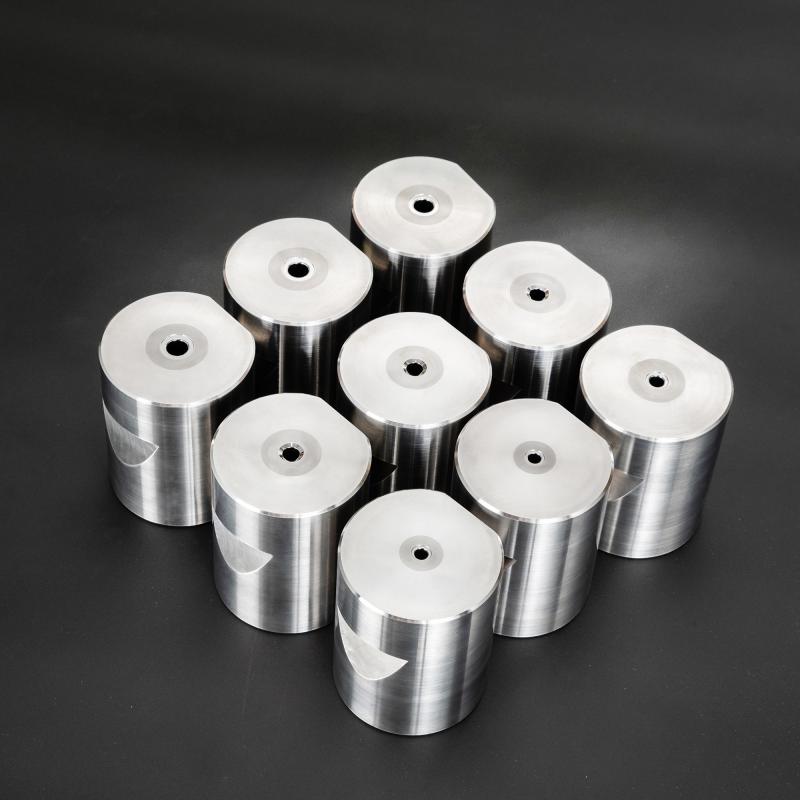In mass production, the importance of Main Dies in ensuring product quality cannot be overstated. Main Dies are essential components used in manufacturing processes such as forging, stamping, molding, and casting. They are responsible for shaping raw materials into the desired form. The design, material, and maintenance of Main Dies have a direct impact on the final product’s quality, including its dimensional accuracy, surface finish, and tolerance control.

1. The Role of Main Dies in Shaping Product Precision
Main dies play a crucial role in determining the precision of the final product. The accuracy of the die’s design and manufacturing is directly reflected in the products produced. When the die is well-crafted, the formed components exhibit minimal deviation from their intended dimensions. Conversely, poor die quality or wear can result in variations that affect the product's usability, performance, and appearance.
Die design involves careful consideration of the geometry, die cavities, and alignment. Small changes in the die cavity can lead to significant variations in the final product’s size and shape, potentially leading to issues such as tight or loose fitting parts, misalignment, and inconsistent product quality. In high-volume production, even minor deviations in die precision can result in large-scale quality issues and increased scrap rates.
2. Mold Cavity Consistency: A Key Factor in Uniformity
One of the most important aspects of main dies is the consistency of the mold cavity. The cavity must be designed to be uniform and stable across all cycles to ensure each product is identical in size and shape. The consistency of the mold cavity is vital for mass production because it ensures that products are produced within specified tolerances, which is crucial for industries such as automotive, aerospace, and electronics, where precision is essential.
Any variation in the die cavity over time—due to wear, material degradation, or improper maintenance—can lead to uneven production, resulting in defects such as warping, dimensional inaccuracies, or structural weaknesses. Maintaining the cavity’s consistency through regular inspections and refurbishing the dies when needed ensures that the products maintain a high level of quality.
3. Surface Finish and Texture Control
The surface finish of a product is a critical quality factor that influences its appearance, functionality, and overall performance. Main dies significantly impact the surface finish of the manufactured parts. The smoothness, texture, and evenness of the die’s surface directly affect the surface quality of the final product. Dies with rough or damaged surfaces may result in parts with scratches, marks, or uneven textures, which can be unacceptable in many industries, particularly where aesthetics and functionality are closely tied.
Additionally, die surface treatments—such as polishing or coating—can improve the surface finish of the parts. The application of surface coatings, such as hard chrome or nitriding, can reduce friction and wear, leading to smoother and more durable parts. In mass production, the quality of the die’s surface and the material used for its construction can make a significant difference in the product’s quality and longevity.
4. Tolerance Control: Ensuring Consistency in Mass Production
In mass production, tolerance control is a key factor in determining product quality. Tolerances refer to the allowable deviation from the specified dimensions of a part. Main dies must be designed and manufactured with precise tolerances to ensure that each product falls within the acceptable range of variation. The die must be able to consistently reproduce the same features, ensuring that the finished parts meet the required specifications.
A well-maintained die contributes to tighter tolerances, which means fewer defects and less need for rework or post-production adjustments. On the other hand, if the die wears down over time or is improperly aligned, it can lead to an increase in part variation, resulting in products that fall outside the acceptable tolerance range. This can cause delays in production, increase scrap rates, and compromise product quality.
5. Minimizing Defects with Proper Die Maintenance
The quality of the final product is also influenced by how well the main die is maintained. Regular maintenance is essential to prevent issues such as die wear, material buildup, or misalignment, which can directly affect the quality of the products. Regular inspections, lubrication, cleaning, and surface treatments ensure that the die operates efficiently and maintains consistent performance throughout the production process.
In addition to routine maintenance, periodic die repairs or replacements may be necessary, particularly after extended use or when the die begins to exhibit signs of wear. By keeping the die in optimal condition, manufacturers can maintain product quality, reduce defects, and extend the life of their tooling, ultimately improving the efficiency and profitability of mass production.
Main dies are a critical element in the mass production process, influencing product quality in terms of precision, consistency, surface finish, and tolerance control. The design, material selection, and maintenance of main dies directly impact the final products' overall quality, ensuring they meet the required specifications and customer expectations. By investing in high-quality dies and performing regular maintenance, manufacturers can achieve superior product quality, reduce defects, and enhance the efficiency of their production processes.











